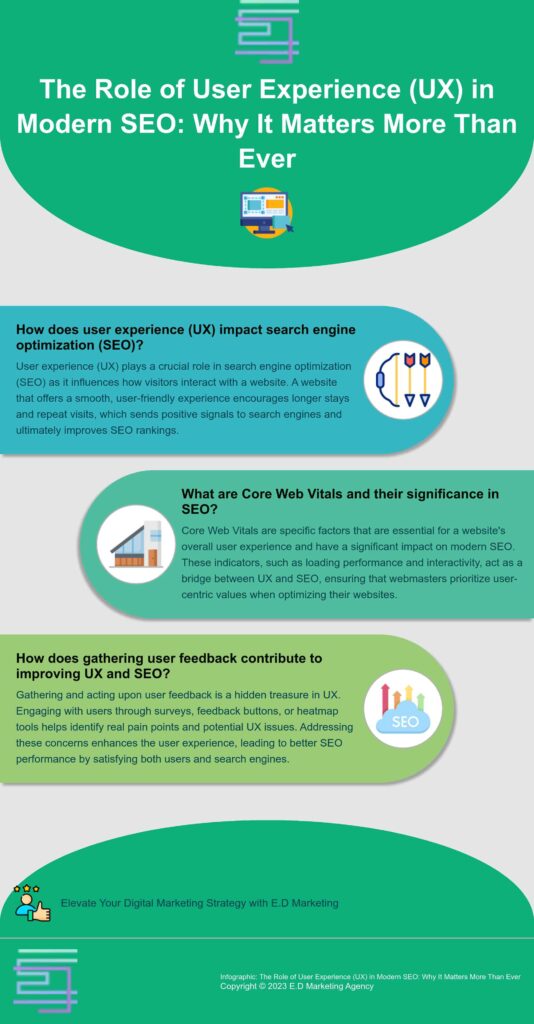
The Symbiotic Relationship between UX and SEO
Search engines like Google have one main goal: delivering the best results to users. To achieve this, they don’t just analyze a website’s content but also its user-friendliness. Enter UX. A website that offers stellar UX ensures visitors find what they’re looking for swiftly and effortlessly. This encourages longer stays and repeat visits, sending positive signals to search engines, leading to better SEO rankings. For a more comprehensive view, you might want to consider diving into articles like Decoding the Secret Ingredient for a Successful Website Design: Which Item Holds the Key?.
Real-world Impacts of UX on SEO
- Amazon: A mere one-second delay in loading can cost Amazon $1.6 billion annually. Fast loading times aren’t just about efficiency; they influence user satisfaction, bounce rates, and, by extension, SEO.
- Medium: The platform prioritizes readability with ample white space and intuitive typography. This optimized reading experience ensures users spend more time on the platform, signaling quality content to search engines.

Digging Deeper: Core Web Vitals
Introduced by Google, Core Web Vitals are a set of specific factors critical to a website’s overall user experience. These indicators, such as loading performance and interactivity, play an indispensable role in modern SEO. For beginners, it’s essential to understand that these vitals act as a bridge between UX and SEO, ensuring webmasters prioritize user-centric values.
Feedback Mechanisms: The Hidden UX Treasure
One often overlooked aspect of UX is gathering and acting upon user feedback. Whether it’s through surveys, feedback buttons, or heatmap tools, understanding real user pain points can unveil potential UX issues, further influencing SEO. Addressing these concerns can lead to an enhanced user experience and better SEO performance.
Rules of Thumb for Merging UX with SEO
- Mobile Responsiveness: Ensure your website looks and functions seamlessly on mobile devices. However, don’t neglect the desktop experience; both should work harmoniously.
- Clear and Intuitive Navigation: A user should instinctively know how to navigate your website. A simple, clear layout can enhance user retention and interaction rates.
- Loading Speed: Aim for lightning-fast loading times. The quicker your website loads, the more you cater to the user’s need for immediacy, improving your SEO standings.
- Quality Content: Content remains king. Offer value, and ensure it’s easily digestible. Clear headings, short paragraphs, and relevant visuals can make a world of difference.
- Engaging CTAs: Your Call to Actions (CTAs) should stand out but not be jarring. They should guide the user naturally to the next step, be it reading another article like Mastering On-Page and Off-Page Optimization: The Ultimate Guide or making a purchase.
Concluding Thoughts
In today’s digital age, with SEO and UX becoming increasingly intertwined, understanding their symbiosis is crucial. They’re no longer siloed entities; they’re partners in the journey to digital success. By acknowledging this relationship and implementing the aforementioned rules of thumb, beginners can pave the way for a website that appeases both users and search engines alike.


